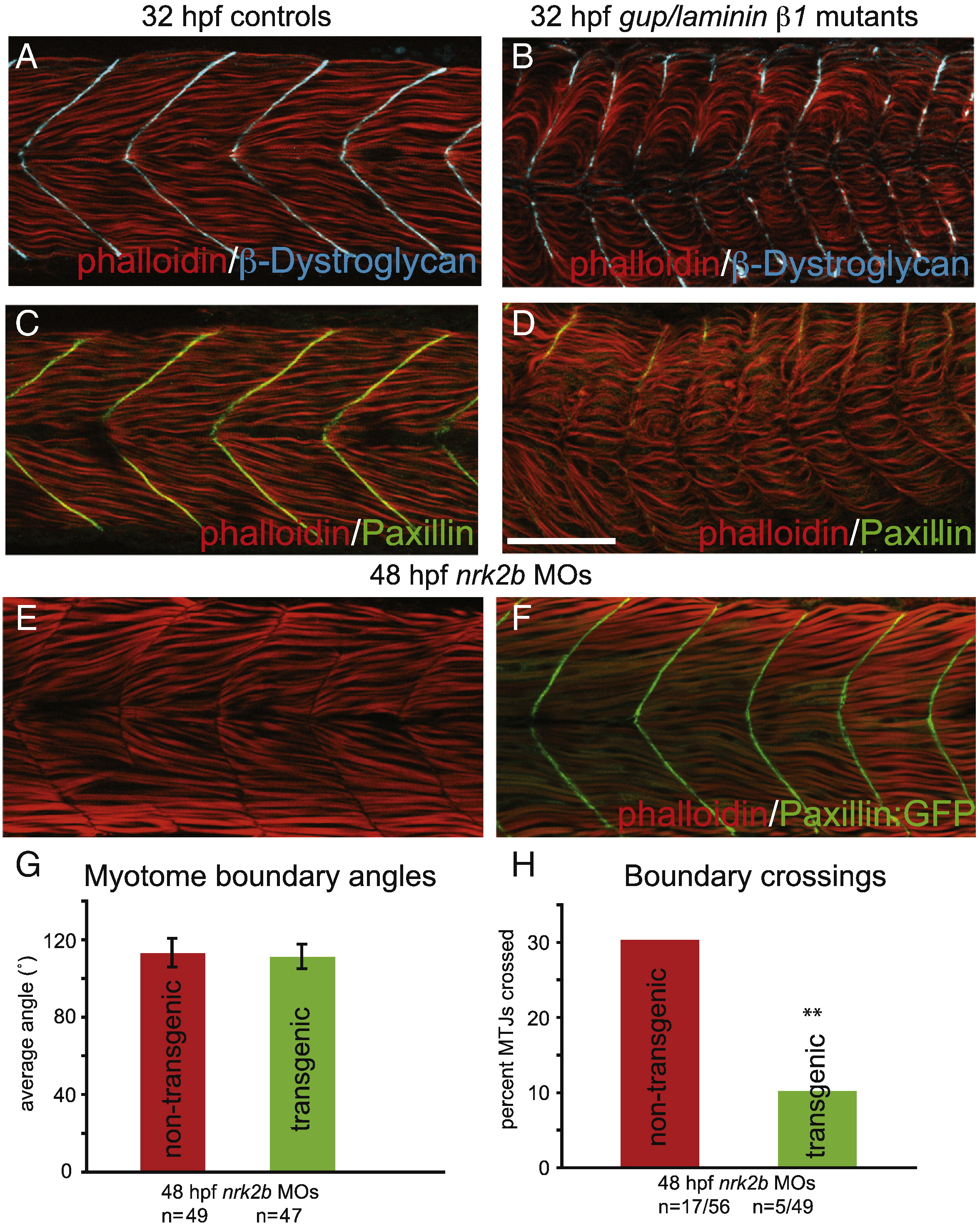Fig. 8 Paxillin overexpression rescues MTJ integrity in nrk2b morphants. (A–D) Side mount, anterior left, dorsal top, 32 hpf controls (panels A and C) gup/laminin β1 mutants (panels B and D) stained with phalloidin (red), β-Dystroglycan (blue) and Paxillin (green). Note that the Paxillin is severely disrupted in gup/laminin β1 mutants, suggesting that adhesion to Laminin plays a role in Paxillin localization. (E–F) Side mount, anterior left, dorsal top, 48 hpf embryos. (E) nrk2b morphant. Note that approximately 1/3 of MTJs are crossed by muscle fibers. (F) nrk2b-MO-injected Paxillin:GFP transgenic zebrafish. Note that overexpression of Paxillin:GFP greatly reduces the frequency of boundary crossings in nrk2b morphants. (G) Graph of myotome boundary angles. Note that overexpression of Paxillin:GFP does not rescue the wider myotome boundary angles observed in nrk2b morphants (n of myotome boundary angles measured is on the x-axis). (H) Graph of percentage of MTJs crossed by muscle fibers. Note that overexpression of Paxillin:GFP does significantly rescue boundary crossings in nrk2b morphants (n of crossed MTJs over total MTJs analyzed is on the x-axis). Scale bar is 50 μm, **p < 0.01.
Reprinted from Developmental Biology, 344(2), Goody, M.F., Kelly, M.W., Lessard, K.N., Khalil, A., and Henry, C.A., Nrk2b-mediated NAD+ production regulates cell adhesion and is required for muscle morphogenesis in vivo: Nrk2b and NAD+ in muscle morphogenesis, 809-826, Copyright (2010) with permission from Elsevier. Full text @ Dev. Biol.

